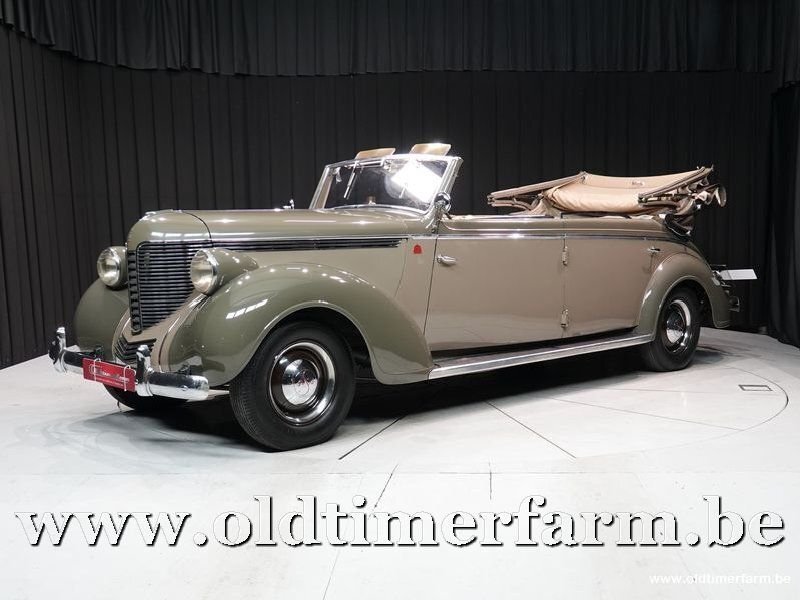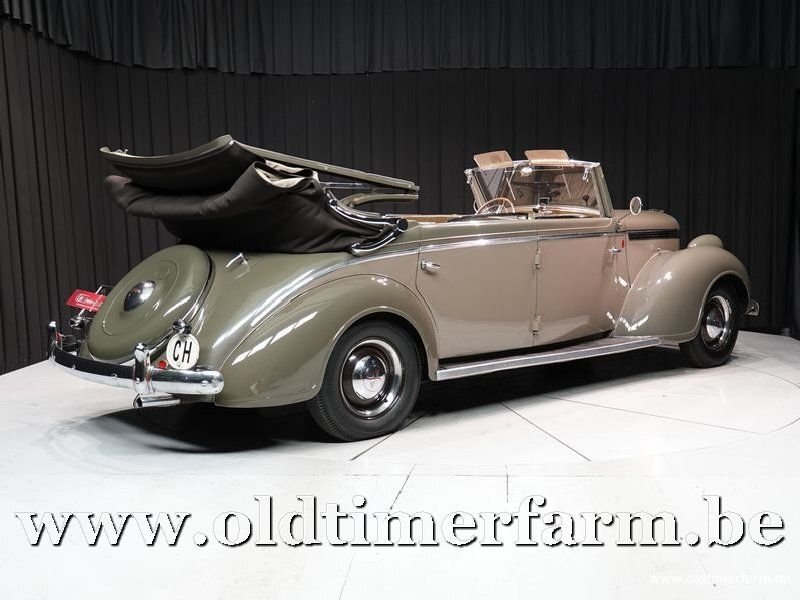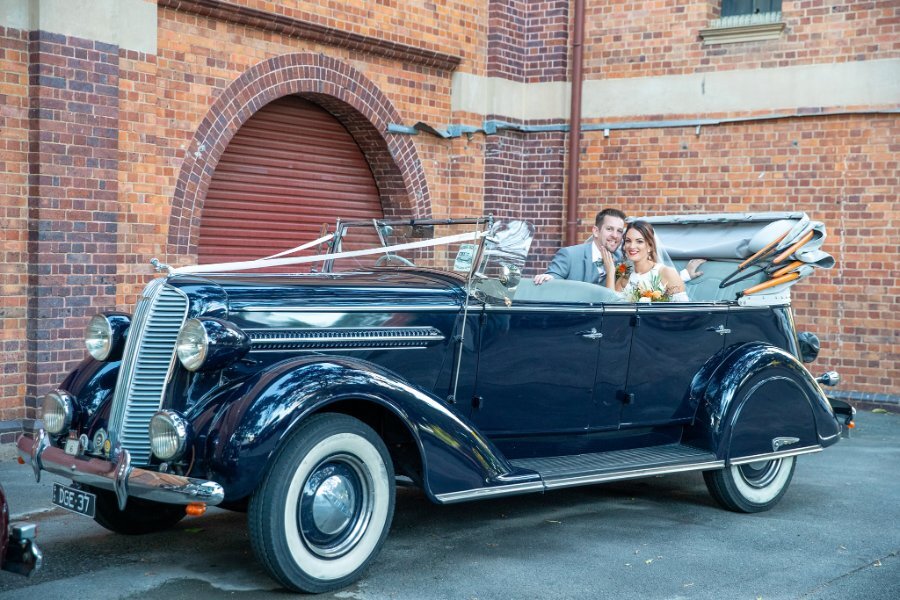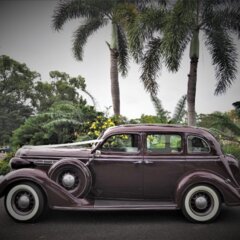-
Posts
665 -
Joined
-
Last visited
-
Days Won
1
Content Type
Links Directory
Profiles
Articles
Forums
Downloads
Store
Gallery
Blogs
Events
Classifieds
Posts posted by maok
-
-
47 minutes ago, Wood and Steel said:
I get spark with wire one if I plug it directly into the coil, and that's the one I'm using for testing. I checked all the wiring I could think to check with the multi meter, and got what I expected. No shorts, good voltage. I definitely could have missed something though. None of the wiring has been changed for several months, and the car is used as a daily driver.
So spark from the coil but not from the distributor?
Check the condensor for a short.
-
It appears to be related to the distributor wiring or condensor.
Do you get spark from any spark plug wires?
-
Best you pull the starter out before you cause a fire.
Post some pics of what you have so we can guide you on testing it.
If you are not confident with a voltmeter, you may need some one who is
-
When you say relay, do you mean the solenoid?
If so, the wiring diagram shows that the solenoid receives it's power from the starter switch, which in turn is supplied by the fuel gauge. Also, the solenoid is grounded via the generator.
-
If you pull the starter out, it can easily be tested on the bench, with or without the either solenoid attached.
Post a pic and we can give you guidance on a ' how to bench test'
-
Just to answer your question regarding the thin and heavy wire to the solenoid, I am guessing a little because I don't have a wiring diagram of your car, the heavy wire is probably the horn wire and it should be connected to the large post on the solenoid. The thin wire is the start wire, coming from the starter switch from your dashboard.
Can you post a wiring diagram.
-
Like here Australia, many mopars in the 1920's and 30's were bodied outside of the USA and Canada.
This '38 Desoto, though its labelled as a '37, probably a '37 production chassis. Wonderful coach work.


-
 2
2
-
-
1 hour ago, harmony said:
This is a good question BobDeSoto.
So didn't anyone at the big table on the top floor of the Chrysler building, including Walter himself, think that it all sounded a little confusing? lol
Besides,,,, why bother? What would be wrong with just referring to the actual year and model of the car? Or would it be that by using a letter/number designation it would magically make someone sound more knowledgeable? Personally I think not.
My 1948 Windsor is a C38. From years of thumbing through the service manual and my parts catalog, I've learned that the #38 referred to the 1946-1948 6 cyl, cars. But can anyone tell me what the number 38 actually represents?
In all the years of owning my 1948 Chrysler Windsor, I have never referred to it as a C38.
As far as I know, the actual number didn't represent anything specific eg., engine size, wheelbase or any feature of the vehicle, just a sequence number starting from C1 in 1935.
-
Yes, that occurred with Chrysler, DeSoto and Dodge models as well. It appears the Chrysler models were the first to change to the numbering system in '35 and the other three changed in '36.
Though, the Dodge trucks did not change, they had a reversal of the letter system ie KC, LC, MC, etc
Chrysler from its inception in '24 used the speed the vehicles could reach, ie series 60 represented 60mph, though the Imperial models were always series 80 from 1926 to 30. This model coding was used until 1930 with Series 66, 70, and 77. Note, they had a series 70 in 1926 as well...lol
Then in 1931 CA.., PA.., DA.., SA.. for each of the makes.
-
 1
1
-
-
The numbering after the prefix letter started in 1935 (or was it '34?) for Chrysler, each model in each year had a specific number. C1 is a standard '35 Airflow, C2 is an Imperial '35 Airflow, C3 is a custom Imperial Airflow in '35, etc Odd one in the Airflows was the CW, which went from '34 to '37.
This system applied to Plymouth, Dodge and DeSoto models all the way to late '40s (?)
-
P = Plymouth D = Dodge S = DeSoto C = Chrysler
-
11 hours ago, andyd said:
Maok.........have always wondered about those 1937 Dodge Tourers as they seem to have bodies that sit higher than the normal sedans.....were they built on the standard 1937 passenger car chassis or the light commercial chassis.....what size wheels does it use?...........regards, andyd
Hey Andy, it's based on a MC truck chassis and running gear. Mine has the usual 16" wheels, but the flyer says that there was the option for 20" wheels, it was marketed to farmers.
-
My '37 MC Dodge touring is relatively rare, apparently 12 were commissioned by Austral Motors, the bodies were built by Hope builders here in Brisbane, Aust.
Previous owner believes there are two other survivors.


-
3 minutes ago, BobDeSoto said:
I was wondering ------
If I take jumper cables and connect them to a 12V battery
while the 6V is in the car (keeping it simple) while it make
the starter spin faster and will it harm anything on either end.
Yes, the 12v battery will make the starter spin faster, general rule with electric motors, higher the voltage, faster the spin, more mechanical resistance, higher the current(amp) draw from the battery.
And yes, the 12v battery will blow things like light bulbs, etc if designed for 6 volts. Do what Sam has suggested and make sure not to have those devices switched on.
-
When making the final contact, do that on the 12v battery +ve or -ve terminal, not on the starter. The contact will cause an arc which may damage your threads on your starter terminal.
-
 1
1
-
-
2 hours ago, 46BulldogDodge said:
The normal...factory setup will have the rotor pointing at 7 o'clock, causing the points to open and fire the spark close to TDC on the compression stroke igniting the fuel/air mixture from the intake. Piston #6 travels up and down exactly in tandem with piston #1 except it is on the exhaust stroke pushing the burned gases out. Since the tang on the bottom of the distributor (looks like a flat blade screwdriver) connects to the oil pump, it can be correct or it can be 180 degrees off. If it's off 180 degrees then #1 cylinder will be at compression when the rotor is at 1 o'clock. This will work but the plug wires must be rotated 180 degrees to match....that would be #1 at 1 o'clock, #5 at 3 o'clock, #2 at 5 o'clock, #4 at 7 o'clock, #3 at 9 o'clock, and #6 at 11 o'clock.
If the oil pump is off by a tooth or two when installed, the #1 plug wire location to match TDC compression can be closer to 6 o'clock or 8 o'clock.
When you wrote "I put a piece of wire in the pipe hole above #6, turned the fan until the wire stopped rising and kept turning the fan again till the wire stopped rising again. At that point the piece of paper over #1 did move.", you successfully located TDC on #1 compression. This is where the engine needs a spark to ignite the fuel/air mixture and power the piston back down.
Dick Hultman
SW PA
'46 Dodge WC & '57 FFPW
If you follow this, you won't have any issues timing your engine.
-
The sender is not 6 volts, its just a variable resistor.
Just buy a 6volt to 12volt converter then use this to feed 12volts to your gauge. These are readily available on ebay, very cheap too.
However, the sender resistance range may or most likely, not match your gauge requirement. Do you have the specs of the gauge ie its resistance range?
-
On 9/8/2023 at 12:46 PM, CarlN-NDC said:
Hey @keithb7, I was re-watching the segment of your video where you demonstrated a few tests with your clamp-style amp meter. I've probably watched that video alone a dozen times since you've posted it, but I always notice some additional detail every play-through!
You had mentioned you weren't able to get an amp reading from the battery cables while cranking over your engine. I hope I'm not pointing out the obvious here, but could it be because the UNI-T UT210D's limit is 200A DC?
Just thinking about how automotive batteries are rated (Cranking Amps and Cold Cranking Amps), they are easily rated to output 3 to 4 times the UNI-T's testing range! We know these stock 6-Volt system can draw quite a bit of amps (OHM's law) through the wires. I know in a separate video you had stated you replaced the battery cables in your '38 Plymouth with 2/0 cables. That got me thinking... I wonder at what size cable would you reach a limit of "diminishing returns"? Where it doesn't matter how much bigger up in cable size you go, there would become some other limitation, outside of the battery cables, whether it be the starter itself couldn't accept any more amps or something else.
Obviously there are many factors at play that can cause a starter to draw more or less amps to get an engine going. Engine temperature, ambient air temperature, overall condition of the engine (how much compression is it making), condition of the wiring harness and connections, etc.
It would be an interesting topic to research further to determine what size cable is the "limit". I'd love to perform this study myself, but my '48 DeSoto is still in pieces! Maybe someone on here has already conducted similar testing?
Carl
FYI, current draw is mainly based on the mechanical resistance from the engine to the start motor, ie. engine capacity, compression, accessories attached, etc. Ohms law doesn't work with an electric motor in the circuit, if you replace the 6volt battery with a 12volt battery you will find that the current draw is slightly larger than the 6 volt battery, going against ohm's law.
-
That looped wire looks a little dodgy to me but difficult to tell from the pic, it's critical that it's well insulated and does not ground.
Before removing distributor, turn engine over until rotor is pointing to #1 spark plug wire, engine should be approximately at TDC, now remove as mentioned above. It's a lot easier working on it on the bench.
-
 1
1
-
-
It won't hurt to advance the timing, you can probably goes as high as 10degree BTDC. Your vacuum gauge will be a good guide to advancing it.
-
 1
1
-
-
Before you blow yourself up, is there any rust blocking the fuel filter?
An electric fuel pump needs to be plumbed near the tank and at the bottom level or lower than the tank.
-
The dwell reading should be around 38 degrees, keep adjusting the gap.
-
 1
1
-
 1
1
-
-
Try turning your distributor clockwise more.
-
You can buy relays with a fuse built into the relay case.


AM Bluetooth transmitter 6V ?
in P15-D24 Forum
Posted
I've seen many FM bluetooth transmitters but none AM